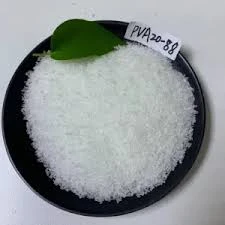Hydroxy Methyl Ethyl Cellulose An Overview of Its Properties and Applications
Hydroxy Methyl Ethyl Cellulose (HMEC) is a cellulose derivative that has garnered significant attention in various industries due to its versatile properties and functionalities. This compound is synthesized through the etherification of cellulose with hydroxy methyl and ethyl groups, which enhances its solubility in water and overall usability in diverse applications. By modifying the natural polymer cellulose, HMEC exhibits unique characteristics that make it an invaluable ingredient in many formulations.
Chemical Structure and Properties
The chemical structure of Hydroxy Methyl Ethyl Cellulose consists of a cellulose backbone with hydroxy methyl and ethyl groups substituted at specific positions on the glucose units. These modifications play a crucial role in enhancing the solubility and viscosity of the polymer. HMEC is typically available in various viscosity grades, which can be tailored to meet specific requirements. The solubility of HMEC in water can vary between temperatures, making it useful for applications that necessitate different handling conditions.
One of the standout properties of HMEC is its ability to form transparent and stable solutions when added to water. This property is particularly advantageous in industries such as cosmetics and pharmaceuticals, where clarity and stability are often essential. Additionally, HMEC is non-toxic and biocompatible, making it a preferred choice for applications in personal care products and drug formulations.
Applications in Various Industries
1. Cosmetics and Personal Care HMEC is widely used in the formulation of creams, lotions, and gels due to its thickening, stabilizing, and emulsifying properties. It helps achieve the desired texture and consistency in cosmetic products while enhancing skin feel and moisture retention. HMEC’s ability to create a smooth feel on the skin also contributes to the overall sensory experience of these products.
hydroxi methyl ethyl cellulos

2. Pharmaceuticals In the pharmaceutical industry, HMEC serves as a binder, coating agent, and film-forming agent in drug formulation. Its biocompatibility ensures that it is safe for use in medications, particularly in oral and topical applications. HMEC can also enhance the stability and release profile of active pharmaceutical ingredients (APIs), making it invaluable in controlled-release formulations.
3. Food Industry Hydroxy Methyl Ethyl Cellulose finds its place in the food sector as a thickening and texturizing agent. It is used to improve the mouthfeel and viscosity of food products, and it also acts as a stabilizer in emulsions. With increasing consumer demand for clean-label products, HMEC's natural origins and safety make it an attractive option for food manufacturers.
4. Construction and Building Materials In the construction industry, HMEC is used in mortar and tile adhesives to improve workability and adhesion properties. Its water retention capabilities contribute to the longevity and durability of the finished products, making it a preferred additive for contractors and builders.
5. Paints and Coatings HMEC is used as a thickener in paints and coatings, providing stability and uniformity to formulations. It helps prevent sedimentation and improves the overall performance of the paint, including its application and drying properties.
Conclusion
Hydroxy Methyl Ethyl Cellulose stands out as a multifunctional polymer with a wide array of applications spanning across cosmetics, pharmaceuticals, food, construction, and coatings. Its favorable properties such as solubility, non-toxicity, and ability to modify viscosity make it an essential ingredient in modern formulations. As industries continue to evolve and prioritize sustainability and safety, the demand for eco-friendly and non-toxic additives like HMEC is likely to increase. This hydrocolloid not only showcases the potential of modified natural polymers but also embodies the intersection of science and industry, paving the way for innovative product development in the years to come.
-
Rdp Powder: Key Considerations for Wholesalers in the Building Materials IndustryNewsJul.08,2025
-
Key Considerations for Wholesalers: Navigating the World of Hpmc - Based ProductsNewsJul.08,2025
-
Hpmc Detergent: Key Considerations for WholesalersNewsJul.08,2025
-
Key Considerations for Wholesalers: China Hpmc For Tile Adhesive, Coating Additives, Concrete Additives, and MoreNewsJul.08,2025
-
Crucial Considerations for Wholesalers: Navigating the World of Construction MaterialsNewsJul.08,2025
-
Key Considerations for Wholesalers Sourcing Additive For Cement, Additive For Concrete, Additive For Putty from Additive Manufacturer Shijiazhuang Gaocheng District Yongfeng Cellulose Co., Ltd.NewsJul.08,2025




